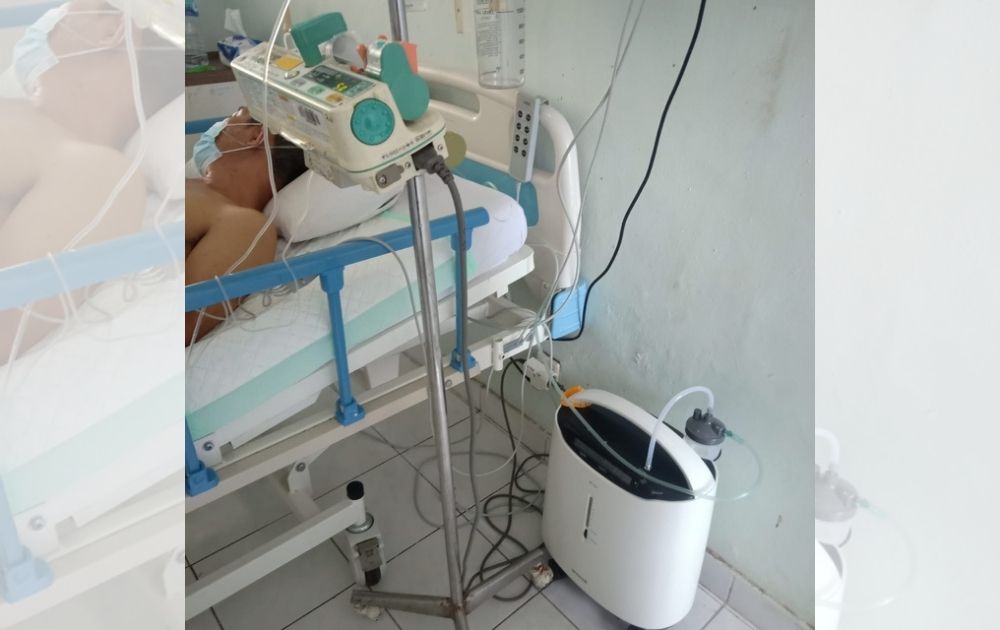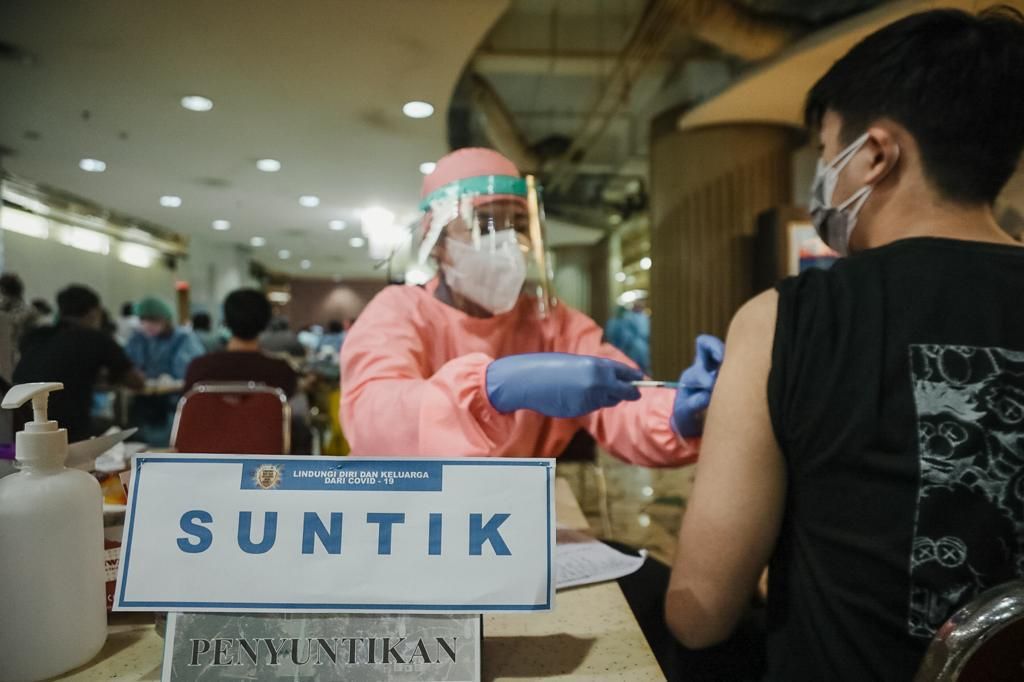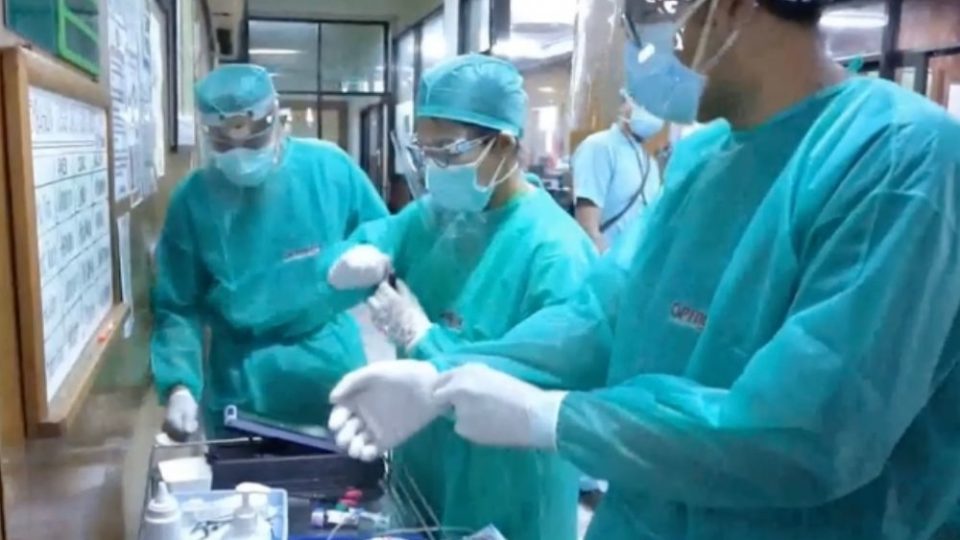Indonesia’s beloved holiday destination of Bali is experiencing the most devastating wave of the COVID-19 outbreak yet, and though the rapid escalation appears manageable so far, experts are warning officials to step up measures in order to prevent an even more devastating outcome.
The island has been reporting around 1,000 new infections everyday this past week as hospitals are starting to fill up.
“Right now, all the beds are occupied,” Cokorda A Wahyu, a doctor at the Udayana University Hospital in Jimbaran, told Coconuts yesterday.
The hospital is among several that have run out of beds to treat COVID patients in Bali, though Wahyu gave his reassurance that there are still enough hospitals in the province to handle the recent spike in cases.
At this point, the alarming rise in coronavirus cases and deaths in recent weeks have not led to a total collapse of the local healthcare system, but it doesn’t negate the fact that more and more patients have had to look at several hospitals before securing a bed for treatment.
Heru Lelono, a 66-year-old Gianyar resident, had to try three hospitals to find a bed for his 72-year-old sibling, who had tested positive for the coronavirus about two weeks ago. He went to Siloam Hospital in Kuta and Udayana University Hospital, and was told that there was no room available at both. Around 1am on July 18, he was finally informed about a bed available at Sanglah General Hospital in Denpasar.
“Thank God, after nine days my sibling has been discharged from the hospital after testing negative for the coronavirus,” Heru said.
Bali residents are increasingly sharing similar anecdotes online recently, illustrating the need for more caution.
The figurative alarm bells for Bali sounded, albeit relatively faintly, last weekend, after Health Agency Chief Ketut Suarjaya confirmed reports about an oxygen crisis on the island. The official said last Friday that there has been an oxygen shortage since July 14, though it was only a couple of days prior that he told local media outlets that there was no such shortage, merely delays in deliveries.

A prolonged crisis appears to have been averted for the time being, as Bali has received hundreds of oxygen concentrators from the central government since.
Wahyu also confirmed as much for the hospital he worked in, saying that while there is limited supply of oxygen, there is still enough to meet current demand.
On the other hand, Made Wirawan, who is behind the popular @blogdokter health account and is currently practicing at one of Bali’s public hospitals, said the situation has not improved despite what officials have been claiming in recent days.
“The condition right now has not improved even with the arrival of oxygen concentrators,” Made said yesterday, though noting that he is unable to generalize the situation for all hospitals in Bali.
The Bali Legal Aid Foundation (LBH Bali) also said on Monday that they received reports of at least five patients dying in Tabanan regency on July 24, citing lack of oxygen supply as the cause.
“Until now, the government is merely solving issues that are happening, not taking preventive measures,” Felix JW, a representative from LBH Bali, said, as quoted by Tempo.
Bali today broke its record on daily new infections and death toll, at 1,452 cases and 44 deaths, respectively. That brings the number of COVID deaths to 500 people in July alone for the province, or almost a quarter of its total death toll, making July its deadliest month yet in the pandemic.
The tip of the iceberg
Dicky Budiman, an Indonesian epidemiologist at Australia’s Griffith University, said officials must be very careful moving forward, especially when Bali’s current testing capacity shows that “they cannot find the majority of infections,” pointing to the high positivity rate of around 45 percent on the island recently.
“Indonesians, including in Bali, when they are sick they treat it by themselves, they will stay at home. That’s around 80 to 85 percent,” Dicky said.
“So when we see cases in hospital, that means it’s [the tip of the] iceberg.”
Dicky warned that more community cases cannot be prevented without appropriate measures, pointing to the dire situation in Java not too long ago as a result of poor testing, tracing, and active case finding. Bali, in his opinion, should step up testing and tracing measures in order to reach the target of five percent positivity rate.
“As long as we don’t reach these targets, where we have to strengthen and add more testing and tracing, without these any claim is very weak,” Dicky said.
With people more likely to treat ailments at home, he stressed the importance of community outreach and home visitations to locate unidentified cases in Bali.
Similarly, the head of Udayana University’s School of Public Health, I Made Ady Wirawan, also stressed the importance of better coordination on testing, tracing, and isolation efforts. The extension of Emergency Enforcement of Restrictions on Public Activities (Emergency PPKM), which is currently set to last until Aug. 2, “won’t stop transmissions” without them, he said.
For now, the COVID-19 task force in Bali says the province has about 4,000 contact tracers, and plans to trace at least 15 people for every confirmed case. In an effort to prevent more transmissions, officials have pushed for centralized isolation using various hotel facilities, some of them offered for free.
‘Get vaccinated’

Wahyu, a doctor at Udayana University Hospital, emphasized that people should go get themselves vaccinated.
“The COVID-19 vaccine is proven to weaken the severity of COVID,” he said.
“On average, patients that are treated in [our hospital] have not been vaccinated, [around] 97 percent.”
Bali is fairly fortunate on this front, with more than three million people having received their first dose of the COVID jab as of July 26, while nearly 800,000 have been fully vaccinated, according to data from the Bali Health Agency.
“Those who have been vaccinated, they can still get infected with COVID but usually their symptoms are mild, and most will self-isolate without needing to go to the hospital,” Wahyu explained.
“Frankly speaking, if cases continue to rise, health workers may experience burnout. When that happens, we’ll be overwhelmed.”




